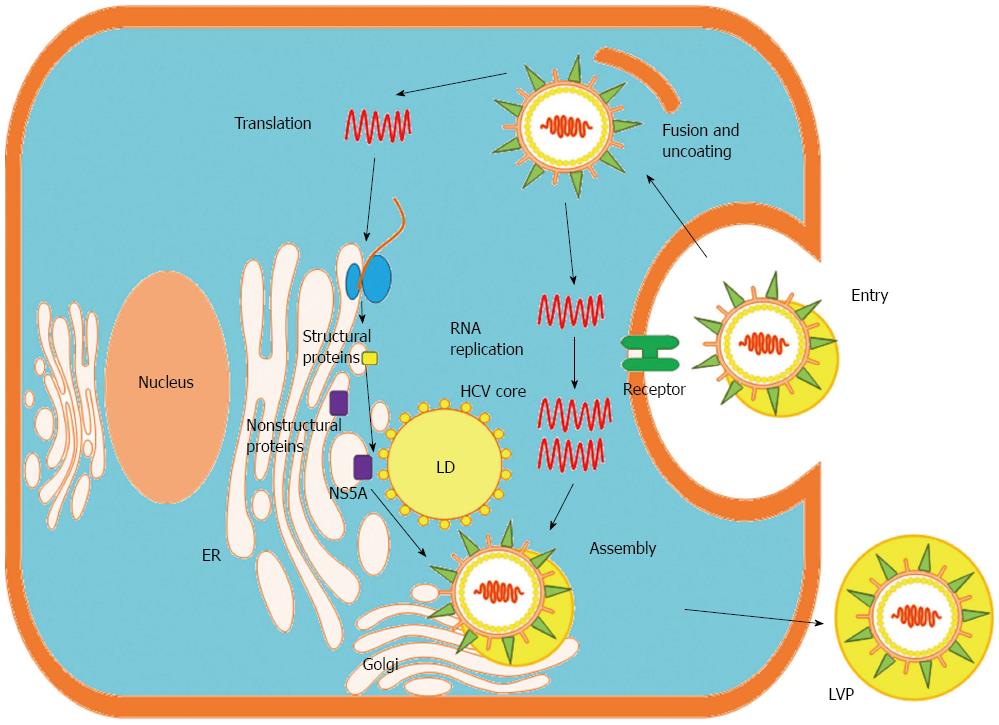Copyright
©The Author(s) 2016.
World J Gastroenterol. Jan 28, 2016; 22(4): 1461-1476
Published online Jan 28, 2016. doi: 10.3748/wjg.v22.i4.1461
Published online Jan 28, 2016. doi: 10.3748/wjg.v22.i4.1461
Figure 2 Life cycle of hepatitis C virus in the hepatocyte.
Hepatitis C virus (HCV) LVPs enter hepatocytes via receptor-mediated endocytosis. Released viral RNA is translated at the endoplasmic reticulum (ER), producing a single polyprotein precursor that is cleaved by host and viral proteases. The viral NS proteins (e.g., NS5A protein) form RNA replication complexes in lipid rafts, where positive-strand RNA is replicated via a negative-strand intermediate. Newly synthesized positive-strand RNA is encapsidated by the HCV core protein in close proximity to LDs, and envelope glycoproteins are acquired through budding into the ER lumen. LVPs mature in the ER through interactions with lipoproteins and exit the cell via the cellular Golgi apparatus. LD: Lipid droplet; LVP: Lipoviral particle; Golgi: Golgi apparatus.
- Citation: Chang ML. Metabolic alterations and hepatitis C: From bench to bedside. World J Gastroenterol 2016; 22(4): 1461-1476
- URL: https://www.wjgnet.com/1007-9327/full/v22/i4/1461.htm
- DOI: https://dx.doi.org/10.3748/wjg.v22.i4.1461









